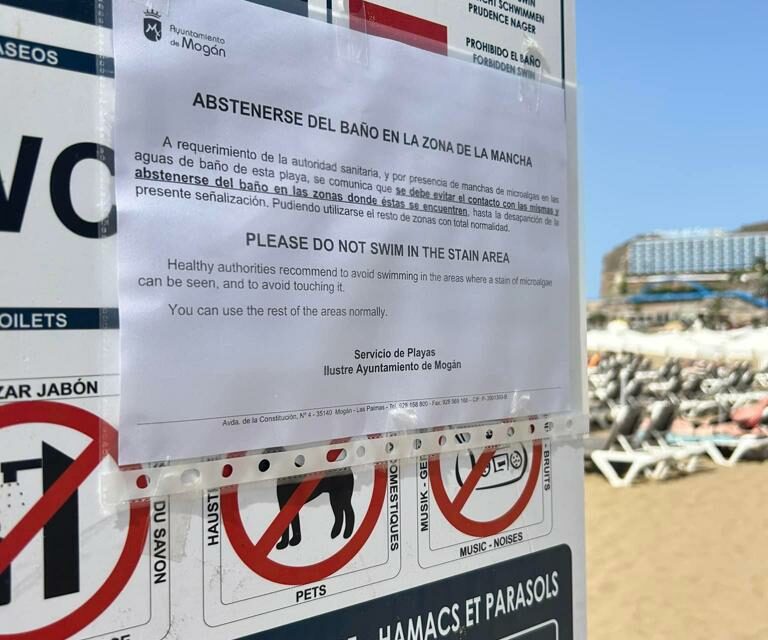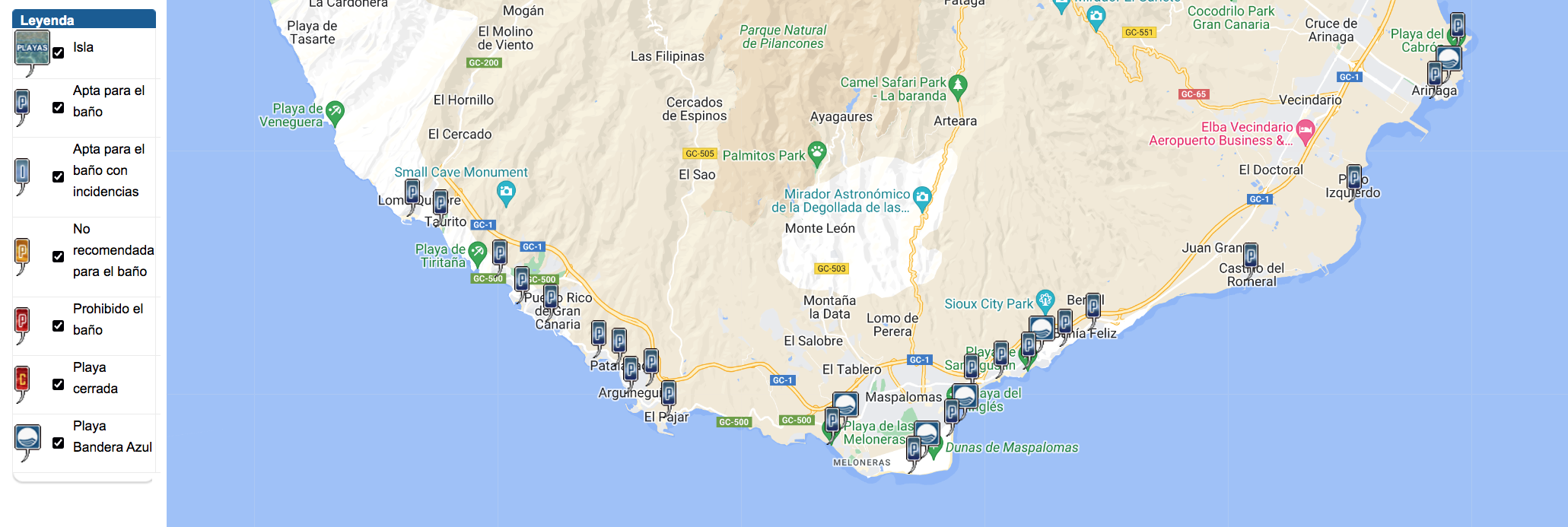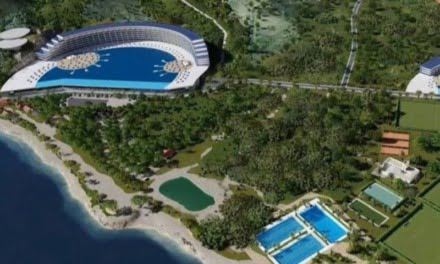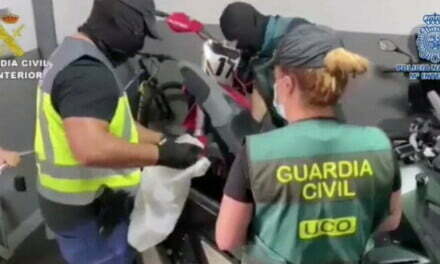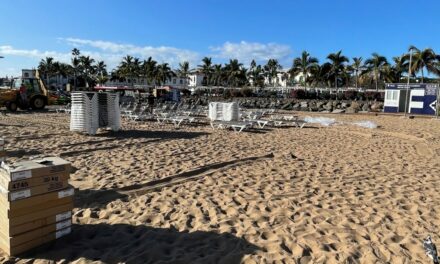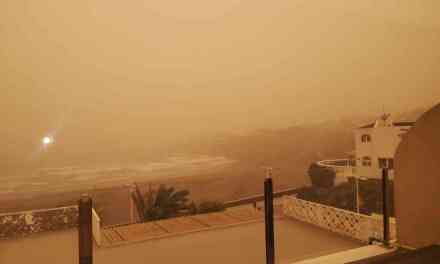Mogán Town Council have, this week, placed small A4 sheets of paper on some of the beach signs at Puerto Rico de Gran Canaria, and possibly other tourist beaches too, urging caution due to concentrations of microalgae. There has been no official information offered, nor any explanation to the public on their website.
Water quality has been a concern for some time throughout the popular tourism municipality of Mogán, where activists have been warning about various issues such as untreated sewerage discharges far too close to the coasts and a lack of water quality controls for at least the last 20 years, though these concerns are rarely, if ever, directly addressed by the town hall or the still-serving mayor. The fresh water system has suffered repeated problems too, due to larger than expected amounts of chemicals being found in tap water.
Mogán has no Blue Flag beaches whatsoever, and has not done for many years; only Puerto de Mogán manages to achieve a high enough standard of cleanliness to be certified. By contrast, all the main beaches a little way down the coast, around Meloneras, Maspalomas and Playa del Inglés are certified as Blue-Flag-worthy. Nonetheless, we are told that the current warnings against swimming are in response to microalgae concentrations which have emerged in recent days, possibly flowing from the north of the island.
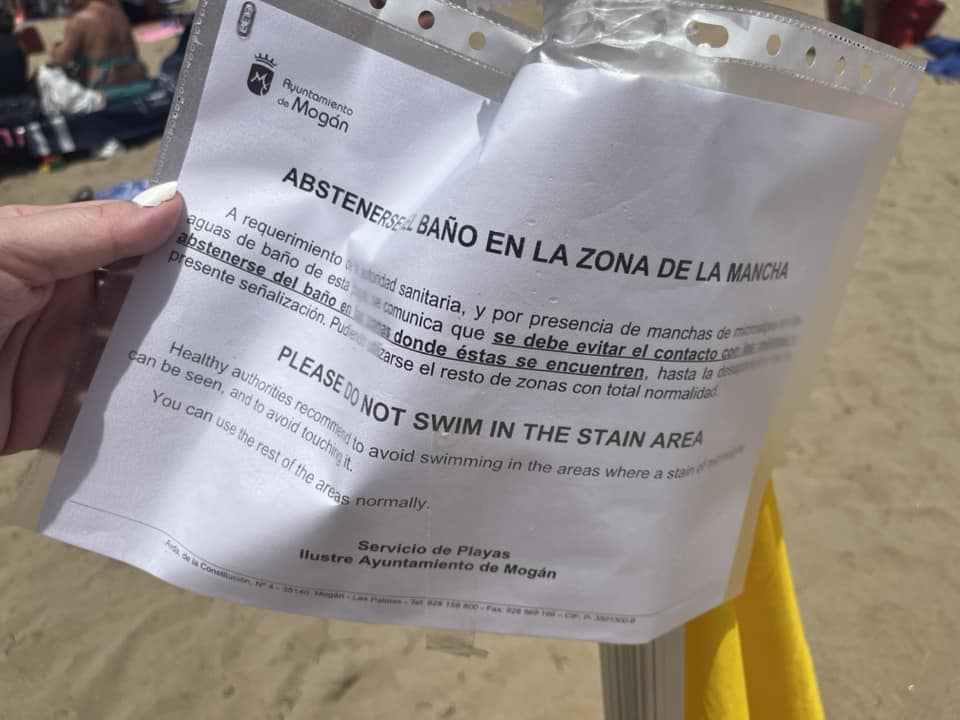 Holiday makers in Puerto Rico de Gran Canaria have been asking questions on social media regarding very visible floating matter collecting around rocks and inflatables. Members of the more than 100,000 strong group have reported some children getting ill after swimming, though there has been no officially confirmed link between the microlagae concentrations and people getting ill, while others have posted about their experiences of the various beaches in Mogán. The only information currently available is from the A4 sheets of paper that have been taped to some signs on some of the beaches, and suggests that the visible scum on the water is most likely microaglae.
Holiday makers in Puerto Rico de Gran Canaria have been asking questions on social media regarding very visible floating matter collecting around rocks and inflatables. Members of the more than 100,000 strong group have reported some children getting ill after swimming, though there has been no officially confirmed link between the microlagae concentrations and people getting ill, while others have posted about their experiences of the various beaches in Mogán. The only information currently available is from the A4 sheets of paper that have been taped to some signs on some of the beaches, and suggests that the visible scum on the water is most likely microaglae.
Some have expressed discomfort with the lack of information provided, and concerns about the potential for encountering raw sewage. Many others have emphasised that there are no such confirmed encounters and that the current situation is only temporary and not something that can be controlled.
The main recommendation is to avoid any such concentrations, and rinse off any that you come into contact with. If anyone becomes ill for any reason they are urged to inform their hotel reception and if needed get a medical diagnosis so as to clarify the conditions and put minds at rest.
Microalgae episodes have been known to have significant effects on the island’s beaches, most recently in areas like Las Canteras beach, on the north of the island, in the capital, Las Palmas de Gran Canaria. Episodes characterised by the presence of microalgae spots that can spread along the coastline, following currents and tides, can result in the need for warnings and restrictions on bathing to ensure public safety. This week in the capital bathing has been restricted following recommendations from the Government of the Canary Islands’ General Directorate of Public Health, including raising the yellow flag to signal potential risks to bathers. In 2017 large microalae blooms where dubbed the “Microalgae Crisis” and led to much public debate about what caused the high concentrations.
Puffer Fish
A professor studying the microalgae found in Las Palmas over recent days has also pointed out that “there may be a relationship” between the massive proliferation of microalgae concentrations and the death of more than a hundred puffer fish, which can be poisonous to humans in their own right, and which have been found along the Las Canteras beach this last weekend. Although “it should be studied”, the presence of some toxic algae in this cluster of microalgae could have been the cause of this unusual phenomenon.
However he advised people not be panicked and await the results of tests being carried out.
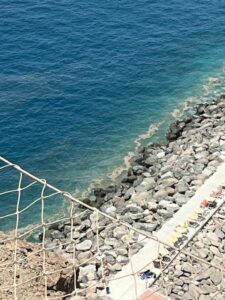 The presence of microalgae can lead to various consequences on the beaches, including:
The presence of microalgae can lead to various consequences on the beaches, including:
1. Discolouration and Odour: Microalgaes can give the water and affected areas a brown colour, which might appear green or even purple under certain lighting conditions. The decomposition of microalgae releases organic matter and ammonia, contributing to the bad smell.
2. Skin Irritation: One of the main negative effects that may be encountered from microalgal concentrations is skin irritations. Direct contact with microalgae or water containing them can cause discomfort and skin-related issues.
3. Beach Aesthetics and Perception: Discolored water and presence of microalgae can negatively impact the aesthetic appeal of beaches. Confusion can arise among beachgoers, who might mistake the microalgae episode for wastewater discharges.
The causes of these microalgae episodes are most often natural and complex, originating offshore. Factors contributing to their occurrence include warm water temperatures, iron from atmospheric haze (Calima), and calm wind conditions, especially during the late summer months.
The effects of microalgae are distinct from wastewater discharges, according marine biologist Pablo Martín. Microalgae are cells that gather on the water’s surface, and when they die, they release organic matter, contributing to the water’s discolouration and odour. In contrast, wastewater discharges result in more consistent and persistent contamination.
Official recommendations in response to microalgae episodes include:
1. Refraining from Bathing: It is advised to avoid entering the water in areas with microalgae concentrations to prevent skin irritation and other potential health risks.
2. Avoiding Contact: Beachgoers should avoid direct contact with the material deposited on the sand, as it could contain microalgae.
3. Wind Considerations: People are encouraged to position themselves upwind of any such concentrations to minimise the inhalation of aerosols that might contain microalgae particles.
4. Water Sports Precautions: Those engaging in water sports are advised to wear well-fitting neoprene garments to minimise skin contact with the water.
5. Proper Hygiene: After potential contact with microalgae, it is recommended to rinse thoroughly to remove any residue from the skin. Clothing and other materials should be washed and dried properly.
It is important for the public to be aware of these recommendations and adhere to them to ensure their safety and the preservation of the natural environment. While the microalgae episodes might cause inconvenience and confusion, they are a natural phenomenon that has been studied by institutions such as the University of Las Palmas de Gran Canaria.

